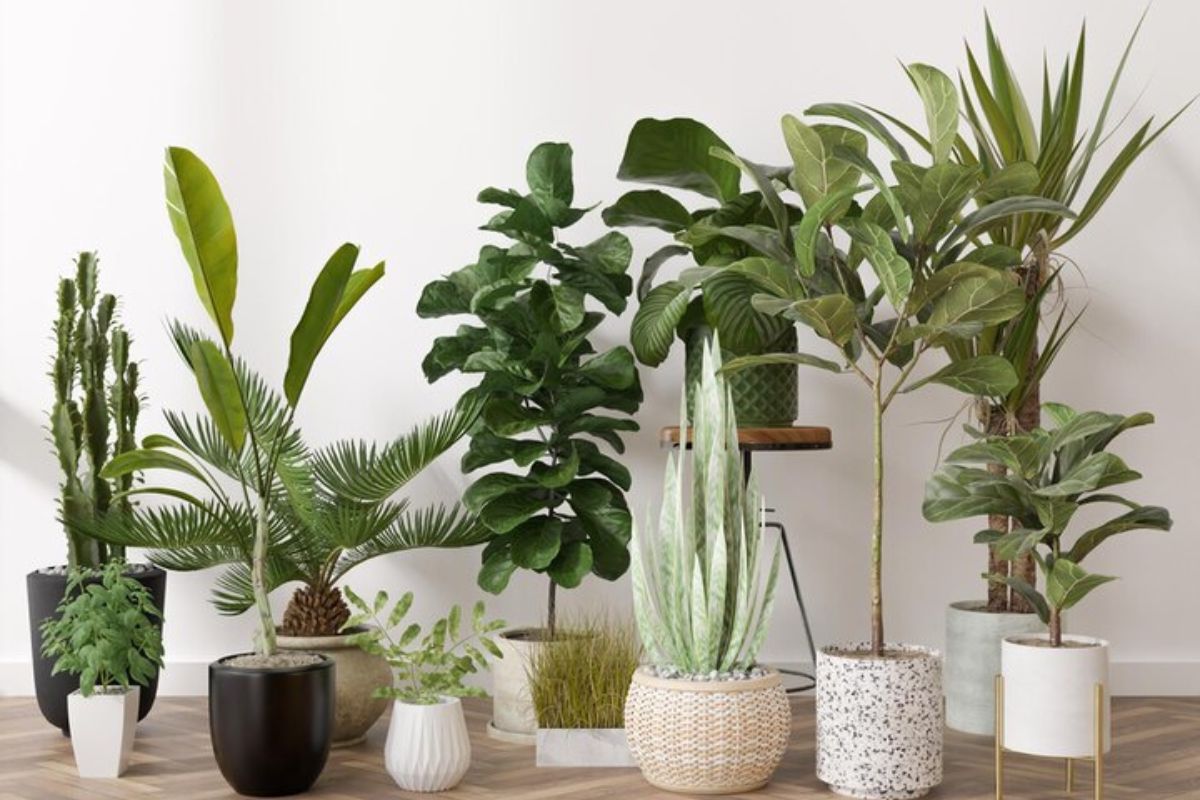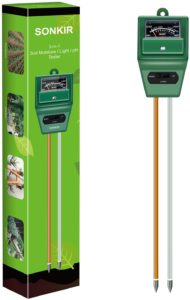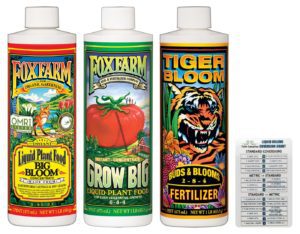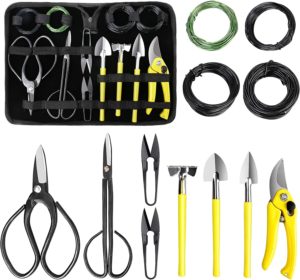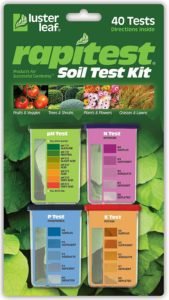Are your indoor plants looking a little lackluster? Fear not, because in this blog post I’ll dive into the world of plant growth and explore various methods to help your green friends thrive!
From finding the perfect balance of water, light, and nutrients to the benefits of using organic fertilizers, I’ve got you covered.
Plus, I’ll teach you the art of pruning and trimming to promote healthy flowering plants. And if that’s not enough, I’ll also show you how to identify and fix common plant growth issues.
Get ready to turn your home into a green oasis and let’s get started!
Provide the right balance of water, light, and nutrients
Providing the right balance of water, light, and nutrients is key to ensure the healthy growth of your indoor plants. So that’s what I’m going to break down here.
How to determine the right amount of water for your plants
Overwatering and underwatering are common mistakes that many plant owners make. To determine the right amount of water for your plants, consider the type of plant, the size of the pot, and the environment. Generally, most plants prefer moist but not waterlogged soil.
Before watering, stick your finger about an inch into the soil to test for moisture. If it feels dry, it’s time to water. If it’s still moist, wait a day or two and check again. It’s better to underwater than overwater, as overwatering can lead to root rot.
Larger pots tend to pool water at the bottom (and why drainage holes are so important!). This is where a moisture meter comes in handy.
Understanding the lighting needs of your plants
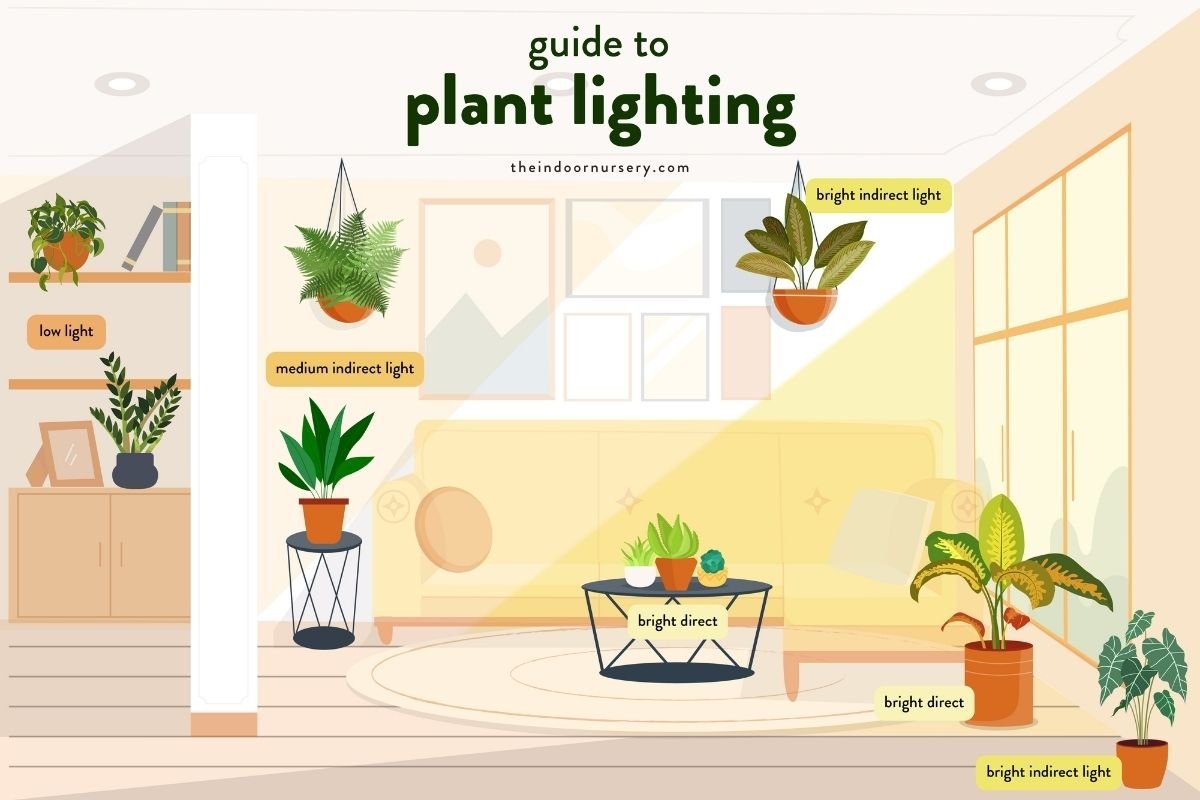
Indoor plants typically require at least six hours of sunlight a day to thrive, but sometimes natural light isn’t enough. That’s where grow lights come in – they can help supplement the natural light your plants receive and promote healthy growth.
If your indoor plants are not getting enough natural light or are showing signs of stunted growth, yellowing leaves or elongated stems, it may be time to consider using a grow light. Or if you live in an area with long winters or limited sunlight, grow lights can be a great way to keep your plants healthy and vibrant year-round.
You can always check your plant’s lighting with a PAR meter.
When using a grow light, it’s important to place it at the right distance from your plants and to use it for the appropriate amount of time each day. Be sure to research the specific needs of your plant species and choose a grow light that provides the appropriate spectrum of light for your plants. With a little bit of care and attention, grow lights can be a great way to help your indoor plants thrive.
The role of nutrients in plant growth

Nutrients play a vital role in the growth of plants… they are literally the building blocks of plant (and all life). Nitrogen, phosphorus, and potassium are the three macronutrients that plants need in the largest quantities. In addition, they require various micronutrients like calcium, magnesium, and iron.
Most potting soils come with some nutrients, but over time, those nutrients get depleted. This is where fertilizers and plant food come in.
Plant fertilizers can be used to supplement the soil with the necessary nutrients. Be sure to follow the instructions on the fertilizer package and avoid over-fertilizing, which can damage the plant.
When to use organic fertilizers
Alrighty, green thumbs, let’s talk organic fertilizers! You may be wondering, why use organic fertilizers instead of chemical ones? Well, there are several reasons why organic fertilizers are the way to go.
Advantages of using organic fertilizers over chemical fertilizers
First off, organic fertilizers are made from natural ingredients like compost, bone meal, and fish emulsion, making them safer for the environment and for you and your pets.
Plus, they don’t contain harmful chemicals that can build up in the soil over time, leading to a toxic environment for your plants.
Organic fertilizers also provide a slow-release of nutrients, allowing your plants to absorb them gradually, which reduces the risk of burning the roots.
I really like Arber plant food. It’s made of food waste and provides an all natural boost in nutrients to your plants in a slow and totally manageable way.
How organic fertilizers can boost plant health
In addition to being safer and more sustainable, organic fertilizers can also improve the overall health of your plants. Organic fertilizers contain a diverse range of micronutrients, which can promote beneficial microbial activity in the soil.
This, in turn, helps to improve soil structure and water-holding capacity, allowing your plants to access nutrients more easily. Plus, the slow-release of nutrients from organic fertilizers can promote healthy growth, strong root development, and vibrant foliage.
So, when should you use organic fertilizers when growing plants? Well, the answer is simple – always! Organic fertilizers are a great choice for all types of plants, from succulents to leafy greens. So, go ahead and make the switch to organic fertilizers, and give your plants the love and care they deserve. They’ll thank you for it with healthy, vibrant growth!
Plant-specific care tips
Plants have evolved to thrive in a variety of climates, each with its own unique challenges and advantages. For example, plants in dry and arid climates have adapted to survive with less water and more intense sunlight, while plants in humid and wet environments have adapted to thrive in soil with more moisture and nutrients.
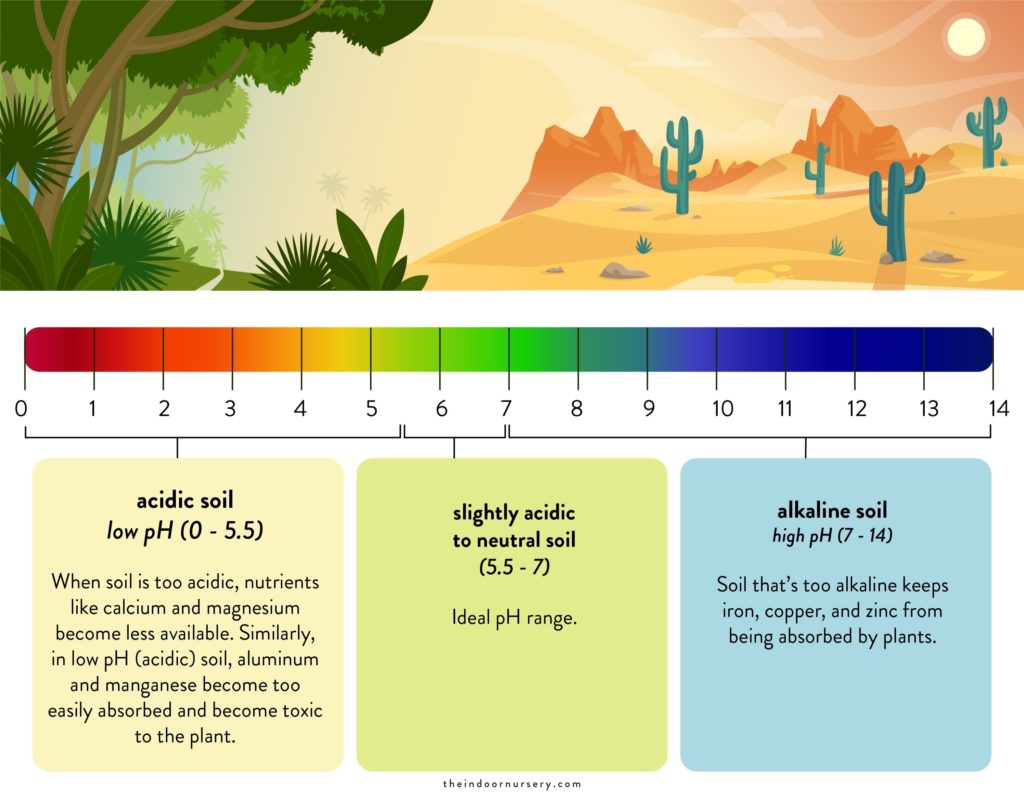
Not only that, but different regions can also have soil with varying pH levels, ranging from acidic to alkaline.
Understanding the specific requirements of your plants based on their natural habitat can help you provide the right care and create a conducive environment for them to thrive.
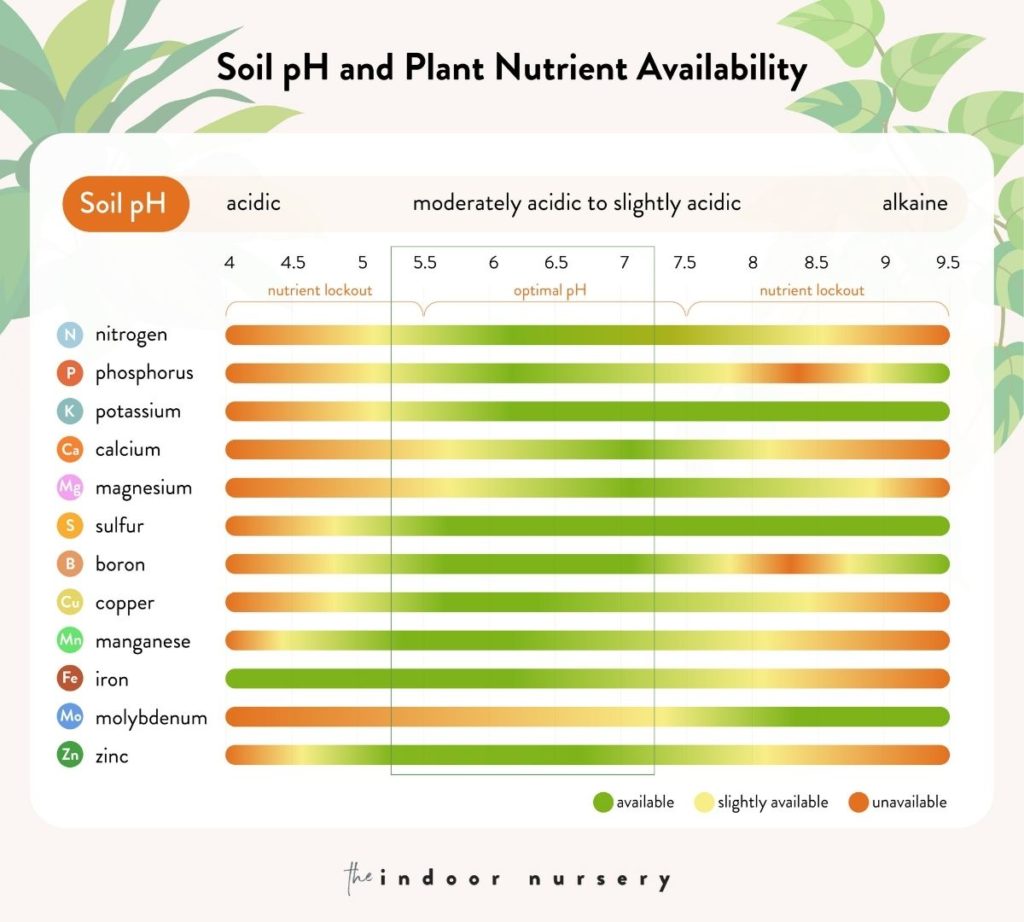
So, whether you’re caring for a desert-dwelling cactus or a tropical fern, read on to learn how to provide the best care for your plants based on their individual needs.
Here are some practical tips for watering, lighting, soil, and pruning for different types of plants:
Cacti and Succulents
- Water sparingly, only when the soil is completely dry.
- Provide bright, indirect light, but avoid direct sunlight.
- Use a well-draining soil mix specifically designed for cacti and succulents.
- Prune dead or damaged leaves as needed, but be careful not to damage the plant’s stem.
Tropical Plants
- Keep the soil consistently moist, but not waterlogged.
- Provide bright, indirect light and keep the temperature between 60-75°F.
- Use a soil mix that retains moisture, but also allows for proper drainage.
- Prune dead or damaged leaves as needed, but be careful not to remove too many leaves at once.
- Water when the top inch of soil is dry, but don’t let the soil dry out completely.
- Provide bright, indirect light and support the vines with a trellis or stake.
- Use a well-draining soil mix with added organic matter.
- Prune regularly to control growth and encourage bushier growth.
In general, it’s important to research the specific needs of your plants and adjust your care accordingly. By paying attention to your plants’ individual requirements, you can help them thrive and grow to their full potential.
Techniques for promoting flowering plants
Let’s talk about everyone’s favorite part of plant care – promoting flowering plants! Whether you’re a fan of colorful blooms or just want to impress your guests with your green thumb skills, there are a few techniques you can use to help your plants reach their full flowering potential.
Pruning and trimming for healthy flowering plants
First up, let’s talk pruning and trimming. This is an essential technique for maintaining healthy flowering plants. By removing dead or damaged leaves, you not only improve the overall appearance of the plant, but you also encourage new growth and promote air circulation. Pruning can also help to remove diseased or pest-infested areas, preventing the spread of infection to the rest of the plant.
Just be sure to use clean, sharp tools and to prune only when necessary, as over-pruning can lead to stress and reduced flowering.
Maintaining the overall health of your plants
Secondly, maintaining the overall health of your plants is key to promoting healthy blooms. This means providing healthy plants with the right balance of water, light, and nutrients, as we discussed earlier.
And keep an eye out for signs of pests or disease and take action promptly if needed. Remember, prevention is better than cure when it comes to plant health.
And finally, give your plants some extra TLC during their blooming season by providing additional nutrients and watering as needed.
Identifying and fixing common plant growth issues
No matter how careful you are, sometimes plant growth issues can arise. But fear not, because by recognizing the signs early and taking action promptly, you can help your plants recover and thrive once again.
Recognizing typical issues that impede plant development
Some common issues that impede plant development include pests, disease, over or under-watering, lack of nutrients, and incorrect lighting conditions.
Pests like spider mites and aphids can suck the life out of your plants, while diseases like powdery mildew can lead to discoloration and wilting.
Over-watering can lead to root rot, while under-watering can cause the plant to become dehydrated and stressed.
Lack of nutrients can lead to yellowing leaves or stunted growth, while incorrect lighting conditions can cause leggy growth or wilting. Be sure to monitor your plants regularly for these signs and take action promptly if you notice anything amiss.
Making restorative moves before it’s too late
If you do notice any of these signs, it’s important to take action before it’s too late. First, identify the issue and take steps to correct it.
For example, if you notice pests, use an organic insecticidal soap or neem oil to get rid of them. If the soil is too dry, water the plant thoroughly and monitor the soil moisture level going forward.
If you suspect a lack of nutrients, consider using a quality organic fertilizer. And if the lighting conditions aren’t ideal, move the plant to a better location with the right amount of light.
Remember, the earlier you identify and correct these issues, the better the chance of your plant making a full recovery. This is exactly why I like to clean plant leaves about once a month with a diluted neem oil mixture. Doing this not only deters pests but it also keeps the leaves nice and available to absorb sunlight and get nice airflow for the stomata.
FAQs about making plants grow faster
How can I promote faster growth in my plants?
If you want your plants to grow faster, there are a few things you can do to help them out.
- First, make sure they’re getting enough light – most plants need at least six hours of sunlight a day.
- Second, water them regularly but don’t overdo it – too much water can actually stunt growth.
- And finally, fertilize your plants with a high-nitrogen fertilizer, which can help promote faster growth.
Just remember, plants are living things and they grow at their own pace, so don’t be too impatient! Give them the love and care they need, and they’ll reward you with healthy growth.
What home remedy will make plants grow faster?
There are many home remedies that can help promote plant growth. Here are a few:
- Epsom Salt Solution: Epsom salt, which is magnesium sulfate, can help improve plant growth by increasing the uptake of essential nutrients. Mix 1 tablespoon of Epsom salt in a gallon of water and use it to water your plants once a month. Use your leftovers for warm, muscle-relaxing baths 🤤
- Fish Emulsion: Fish emulsion is a natural fertilizer that provides essential nutrients to plants, promoting growth and improving soil quality. Mix 1 tablespoon of fish emulsion with a gallon of water and use it to water your plants every two weeks.
- Compost Tea: Compost tea is a nutrient-rich liquid that is made by steeping compost made from food scraps in water. It contains beneficial microorganisms that can help promote healthy plant growth. Mix one part compost to five parts water and let it steep for 24 hours before using it to water your plants.
- Banana Peel Tea: Banana peels are a great source of potassium, which is an essential nutrient for plant growth. To make banana peel tea, soak banana peels in water for a few days, then use the water to water your plants.
- Coffee Grounds: Coffee grounds are high in nitrogen, which is an essential nutrient for plant growth. Simply sprinkle coffee grounds around the base of your plants and work them into the soil. However, it’s important to use coffee grounds in moderation as they can also make the soil more acidic. If your soil is already acidic, coffee grounds may do more harm than good.
The best way to determine which home remedy to use for your plants is to research the specific needs of your plant species and take into account any issues or deficiencies that your plant may be experiencing. For example, if your plant is showing signs of magnesium deficiency, using an Epsom salt solution may be beneficial. If your plant is lacking essential nutrients, fish emulsion or compost tea may be helpful.
You can do a soil test to see what the nutrient levels and pH levels are in the soil.
It’s SUPER important to use home remedies in moderation and in accordance with the specific instructions for each remedy. Too much of a good thing can be harmful to your plants, so it’s important to follow the recommended application rates. (I once killed a bougainvillea with too much compost tea 💀)
How often should I prune my plants to promote growth?
Pruning is an important part of plant care, but it’s important to do it at the right time and in the right way. To promote growth, you should prune your plants regularly, but not too often – once or twice a year should be enough for most plants. When pruning, focus on removing dead or damaged leaves and branches, as well as any growth that’s become too dense or tangled.
By doing this, you’ll encourage new growth and help your plant stay healthy and vibrant. Just be sure to use sharp, clean tools and prune with care to avoid damaging your plant.
Indoor plants can be pruned at different times depending on the type of plant and its growth habits. As a general rule, it’s best to prune indoor plants during their active growth periods, which are usually in the spring and summer months (not during cold weather).
However, some plants may have different pruning requirements. For example, if you have a flowering plant, it’s best to prune it immediately after it finishes flowering. On the other hand, if you have a plant that grows year-round, you can prune it as needed throughout the year. Just try not to stress it out too much.
Can I use tap water to water my plants or is filtered water better?
Yes, you can use tap water to water your plants, but it’s important to be aware of the quality of your tap water. Some tap water may contain chemicals or minerals that can be harmful to plants over time. If you’re concerned about the quality of your tap water, you can use filtered water instead.
However, keep in mind that some plants may be sensitive to the chemicals that are removed by filters, such as chlorine, so it’s important to do your research and find the best water source for your specific plant species. In general, most plants will be perfectly fine with tap water as long as it’s not overly chlorinated or contains high levels of minerals.
Final thoughts
And there you have it, green thumbs – all the tips and tricks you need to promote healthy plant growth and create a lush, vibrant garden! Let’s do a quick recap:
- Providing the right balance of water, light, and nutrients is essential to ensure healthy plant growth.
- Organic fertilizers are a great choice for promoting plant health and sustainability.
- Pruning and trimming can help maintain healthy flowering plants.
- Monitoring your plants for signs of pests, disease, and other issues is key to preventing and addressing growth problems.
Remember, creating a conducive environment for your plants to thrive and flourish is all about balance. By providing the right amount of water, light, and nutrients, and monitoring your plants regularly, you’ll be well on your way to having a beautiful and healthy garden.
So go ahead and get your hands dirty – try out these tips and watch your plants grow and flourish like never before. Happy gardening!
more about common questions
- How To Get Rid Of Scale On Plants
- How To Treat A Magnesium Deficiency In Cannabis
- It’s Not O-K: Potassium Deficiency in Cannabis
- How To Make Pothos Fuller (In 5 Minutes)
- Save Your Overwatered Monstera In 4 Steps (And How Not To Do It Again)
- Scale On Monstera: What To Do And How To Save It
- Common Calathea Problems and How to Fix Them

